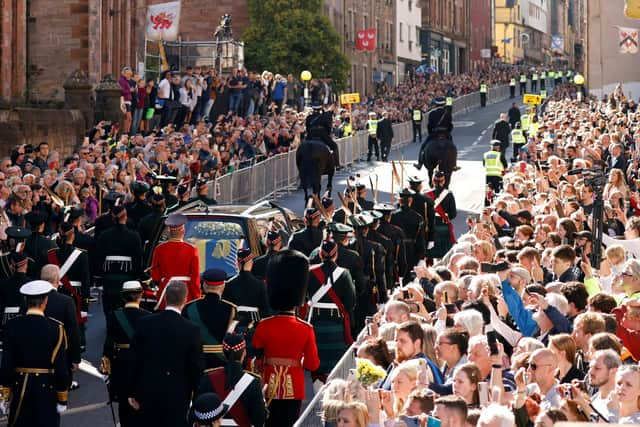Queen Elizabeth II: Huge crowds showed a different side of Scotland to the rest of Britain – John McLellan
and live on Freeview channel 276
Then there are predictions of what kind of king Charles will be, his controversial record of political intervention, his wife’s transformation from Cruella de Ville to valued Queen Consort, and the signs in these the earliest days of the biggest change in national life for 70 years.
The most diligent royal writer or political reporter can only make informed guesses; no-one can tell how events will unfold, any more than anyone could have predicted the tragic events of 1997, the effects of which are still felt today and, thanks largely to Prince Harry, continue to frame how the Royal Family is regarded.
Advertisement
Hide AdAdvertisement
Hide AdThere is no shortage of pronouncements about how safe the monarchy already seems, and while there has always been an air of gloom around him, the King does seem assured after the end of the longest apprenticeship in British constitutional history.
So too does the new Prince of Wales carry himself with the special blend of detachment and familiarity which Queen Elizabeth perfected, despite the constant glare of publicity unimaginable when she succeeded; compare the sea of smart phones on the High Street with the fuzzy black and white TV images from her 1953 coronation.
But then the questions; can the King truly transition from a meddling Prince sending government ministers his infamous “black spider memos” to a constitutional monarch with no perceptible opinions?
And here, do the thousands of people packing Edinburgh’s streets for a glimpse of the coffin, or the thousands patiently snaking their way around the Meadows to pay their respects at St Giles in person, signal the United Kingdom is secure?
Advertisement
Hide AdAdvertisement
Hide Ad

Respect for the monarch doesn’t automatically mean respect for monarchy, and just as belief in monarchy doesn’t equate with belief in the United Kingdom, it’s not the case that all unionists are monarchists.
It’s too early to tell if anything has changed, but in May a survey by the British Future thinktank found 36 per cent of Scots favoured abolition when the Queen died and 19 per cent were undecided.
It’s a fair assumption, the handful of republican protestors apart, that the vast majority who attended this week’s events were in the 45 per cent who support the monarchy, and the First Minister’s prominent role in the Scottish ceremonies illustrated the tensions within nationalism about what independence should mean.
But trying to predict Scotland’s political future from a heartfelt expression of loss in the moment is a rabbit hole from which no convincing conclusions will emerge.
Advertisement
Hide AdAdvertisement
Hide AdThe staggering pictures of Edinburgh at the start of the week are no gauge of feeling in the Greater Glasgow conurbation where the majority of Scots live. The crowds which thronged Glasgow’s George Square for the Silver Jubilee in 1977 (my mum still has a picture) might well have been surpassed in these sad circumstances, but we’ll never know.
What we do know is that quiet people who do not go on protests or wave banners came out in their thousands and showed their colours with dignity. And the rest of Britain saw a very different Scotland.
Comment Guidelines
National World encourages reader discussion on our stories. User feedback, insights and back-and-forth exchanges add a rich layer of context to reporting. Please review our Community Guidelines before commenting.

